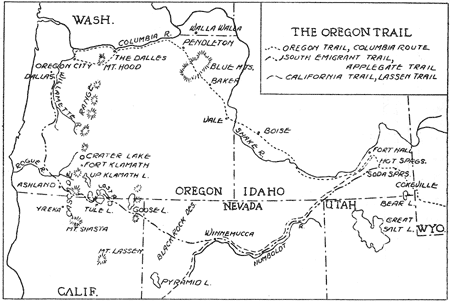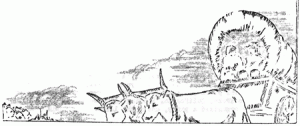Outline of Events in the History of the Modoc War
By Don C. Fisher, Assistant Chief Ranger and John E. Doerr, Jr., Park Naturalist
Introduction
Beginning with this number of Nature Notes from Crater Lake National Park, and continuing through Volume X which will be issued during the summer months of 1937,Nature Notes will present an Outline of the Events in the History of the Modoc War. In preparing this outline the authors have described briefly the important events in the development of south central Oregon and northeastern California during the period 1846-1873. That period was one of constant struggle between the white settlers and the Modoc Indians. There were acts of treachery, murders, massacres and numerous councils, culminating in the Modoc War of 1872 – 1873. The most important battles of the war took place in the area of what is now the Lava Beds National Monument in northeastern California. The places where important events of the war took place are among the most interesting features of the Monument. – Editor

(click on image for an enlargement in a new window)
Part I
1846 – 1870
| 1846 | South Emigrant Trail (Applegate Trail) established. |
| Lindsay Applegate, accompanied by fourteen other settlers in the Willamette and Rogue valleys in western Oregon, established the South Emigrant Trail between a point on the Oregon Trail near Fort Hall, Idaho and the Willamette Valley. The purpose of this new route, shown on the map on the opposite page, were to encourage settlers to western Oregon, to eliminate the hazards encountered on the Columbia Route, to provide an alternate route in the event of trouble with England, Hudson’s Bay Company controlled the Columbia Route, and to provide a route which would be open except for a short winter season each year.From what is now Dalles, Oregon, the Applegate party went south up the Willamette Valley, through the Umpqua and Rogue River valleys to a point near what is now Ashland, Oregon. From there the party proceeded eastward, crossing the Cascade Range near Green Springs Mountain, to Spencer Creek near the present town of Keno, Oregon. From there a route was selected around the south end of Lower Klamath Lake, then northward along the high ground between Lower Klamath Lake and Tule Lake to a ford on Lost River (“Stone Bridge”). Passing north of Tule Lake and Clear Lake the party continued eastward to Goose Lake, then southeast across the Black Rock Desert to what is now Winnemucca on the Humboldt River in Nevada. Following up river about 200 miles, then continuing northeast, the party reached Hot Springs Valley on the Oregon Trail, about 50 miles southeast of Fort Hall, Idaho. | |
The first emigrants to reach western Oregon by way of the South Emigrant Trail arrived in the fall of 1846, having been conducted west by the Applegate party on their return from Hot Springs Valley.
Lindsay Applegate and his party were the first white men to enter what is now the Lava Beds National Monument. On their exploring trip eastward they attempted to pass around the south end of Tule Lake but the rough lava along the shore forced them to seek a route around the north end of the lake. Visitors going to the Lava Beds National Monument by way of the road south of Merrill, Oregon, cross Lost River at the “Stone Bridge” over which hundreds of emigrants passed on their way to western Oregon. A monument near the bridge records the names of the men in the Applegate party.
Many of the events of the Modoc War took place along the South Emigrant Trail.
1847-51 Modoc Indians molested emigrants on the South Emigrant Trail.The Modoc Indians, numbering about 600 warriors under the leadership of Old Chief Schonchin, inhabited the region around Lower Klamath Lake, Tule Lake, and Lost River in northern California and southern Oregon. The Modoc Indians were part of the Klamath tribe, a division of the tribe having taken place many years before the first white men came into the region.
California became a state in 1850.
1852 First massacre of emigrants by Modoc Indians at Bloody Point.In September the Modocs destroyed an emigrant train at Bloody Point on the east shore of Tule Lake. Of the 65 persons in the train only three escaped immediate death; two young girls, taken prisoners and killed several years later by jealous Modoc women, and one man who made his way to Yreka, California. Hearing the news of the massacre, Yreka settlers organized a party, under the leadership of Jim Crosby, to go to the scene of the massacre to bury the dead and avenge their death. Crosby’s party had one skirmish with a band of Modocs.



